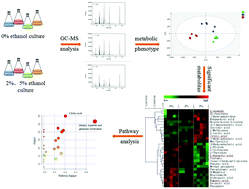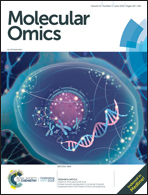Metabolic responses of Saccharomyces cerevisiae to ethanol stress using gas chromatography-mass spectrometry
Abstract
Ethanol, as one of the most important biological fuels, is mainly produced by Saccharomyces cerevisiae. But with the accumulation of ethanol, the viability and growth of Saccharomyces cerevisiae is often stressed during fermentation. At present, the reaction mechanism of Saccharomyces cerevisiae to ethanol stress has not been fully elucidated. In this paper, a metabolomics approach with gas chromatography-mass spectrometry was performed to investigate the metabolic changes of Saccharomyces cerevisiae cultured with 0%, 2% and 5% ethanol. The results of partial least-squares discriminant analysis (PLS-DA) clearly reflected the metabolic variations induced by ethanol stress. It was found that in total 36 metabolites changed significantly with univariate analysis, including amino acids, organic acids, and fatty acids. The citrate cycle and alanine, aspartate and glutamate metabolism were found as the markedly perturbed metabolic pathways. Significant alterations of metabolites in these pathways (succinic acid, citric acid, pyruvate, fumarate, glutamate, aspartate, alanine) indicated that ethanol stress impeded the citrate cycle at the node of citrate. This might cause insufficient energy supply of the cell and the synthesis reduction of some amino acids and other substrates. Furthermore, the growth of the cell was slowed down. These results demonstrated that metabolomics has potential to reveal the regulation mechanisms for ethanol stress in Saccharomyces cerevisiae.



 Please wait while we load your content...
Please wait while we load your content...